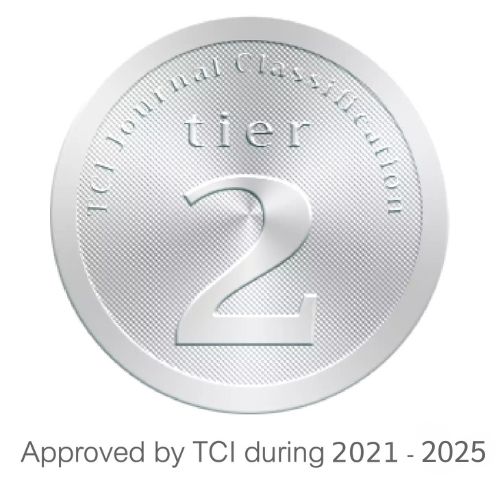ชาวจีนในดัตช์อีสต์อินดีส: บทบาทชาวจีนในการพัฒนาเมืองเดลี-เมดาน สุมาตราเหนือในศตวรรษที่ 19
Chinese in Dutch East Indies: The Roles of Chinese in Developing Deli-Medan,North Sumatra in the 19th Century
Keywords:
ชาวจีน, เดลี-เมดาน, สุมาตราเหนือ, อาณานิคมดัตช์, อินโดนีเซียAbstract
ชาวจีนจำนวนมากเดินทางเข้ามายังเดลี-เมดานในช่วงศตวรรษที่ 19 ในฐานะแรงงานสัญญาจ้างเพื่อพัฒนาเขตเกษตรกรรมของดัตช์บนเกาะสุมาตราโดยเฉพาะบริเวณตะวันออกของสุมาตราเหนือครอบคลุมพื้นที่ของเดลี เซอดัง (Deli-Serdang) และเมืองเมดาน (Medan) ในปัจจุบัน พื้นที่ดังกล่าวถูกพัฒนาขึ้นให้กลายเป็นพื้นที่เกษตรกรรมสมัยใหม่ มีการเพาะปลูกพืชหลายชนิด โดยพืชเศรษฐกิจที่สำคัญที่สุดในพื้นที่ขณะนั้น คือ ใบยาสูบ ซึ่งความประสบความสำเร็จในการผลิตและส่งออกส่งผลให้เศรษฐกิจในพื้นที่เจริญเติบโตจนรัฐบาลอาณานิคมได้ก่อตั้งเมืองเมดานขึ้นเป็นเมืองบริหารของรัฐบาลในสุมาตรา บทความชิ้นนี้เป็นส่วนหนึ่งของงานวิจัยเรื่องพื้นที่ความทรงจำ: บทบาทชาวจีนและเครือข่ายในการสร้างเมืองจอร์จทาวน์และเดลี-เมดานในฐานะเมืองพี่น้อง มีวัตถุประสงค์เพื่ออธิบายการเดินทางอพยพเข้ามาของชาวจีนในพื้นที่เขตเศรษฐกิจของดัตช์บนเกาะสุมาตราและสะท้อนภาพการเจริญเติบโตของเดลี-เมดานผ่านกิจกรรมทางเศรษฐกิจที่ถูกขับเคลื่อนโดยกลุ่มชาวจีนอพยพ คือ กลุ่มแรงงานและพ่อค้านักลงทุนชาวจีนในศตวรรษที่ 19References
Breman, J. (1997). Menjinakkan sang Kuli, Politik Colonial, Tuan Kebun dan Kuli diSumatera Timur pada Awal Abad ke-20. Jakarta: Grafiti-Perwakilan Konin-Klijk Instituut voor Taal, Land, en Volkenkuunde Jakarta.
Buiskool, D. A. (2009). The Chinese commercial elite of Medan, 1890-1942: The Penang. Journal of Malaysian Branch of the Royal Asiatic Society. 82(2): 113-129.
Buiskool, D. (2004). A plantation city on the coast of Sumatra 1870-1942 (Planters, the Sultan, Chinese and the Indian). Surabaya: The 1st International Urban Conference proceedings.
Chandra, R. (2011). Tjong Yong Hian: Legacy of a Great Leader: Dedicated to the Memory of Tjong Yong Hian, 1850-1911. Medan: Budihardjo Chandra and Family.
Dick, H., Sullivan & John Butcher. (1993). The Rise and Fall of Revenue Farming: Business Elites and the Emergence of the Modern State in Southeast Asia.London: Palgrave Macmillan UK.
Godley, M. (1973). Chang Pi-Shih and Nanyang Chinese Involvement in South China’s Railroads, 1896-1911. Journal of Southeast Asian Studies. 4(1): 16-30.
Hamdani, N. (2013). Komunitas Cina di Medan dalam Lintasan Tiga Kekuasaan,1930-1960, Jakarta: PMB-LIPI bekerjasamadengan NIOD.
McKinnon, E. & Sinar, T. (1978). A Note on Aru and Kota Cina. Indonesia. (26): 1-42.
Pin, P. (2017). Family Business Generation in Medan, Indonesia with Efforts to Adapt to Changes in Government System. International Journal of Management Science and Business Administration. 3(6): 59 – 65.
Pelly, U., Alfian, I., and Ratna R. (1986). Sejarah Pertumbuhan Pemerintahan Kesultanan Langkat, Deli dan Serdang. Jakarta: Proyek Inventarisasidan Dokumentasi Sejarah Nasional.
Reid, A. (2005). An Indonesian Frontier: Acehnese and Other Histories of Sumatra.Singapore: NUS Press
Sinar, L. (1996). The History of Medan in the Olden Times. Medan: Lembaga Penelitiandan Pengembangan Seni Budaya Melayu.
Suryadinata, L. (2012). Southeast Asian Personalities of Chinese Descent: A Biographical Dictionary. Singapore: ISEAS-Yusof Ishak Institute.
Volker, T. (1928). From Primeval Forest to Cultivation: A Sketch of the Importance of The Tobacco, Other Cultivations and the Industry of the East Coast of Sumatra, the Deli Planters’ Association and the General Association of Rubberplanters on the East-Coast of Sumatra. Michigan: University of Michigan.
Werblowsky, R. J. Z., & Walravens, H. (2002). The Beaten Track of Science: The Life and Work of J.J.M. de Groot. Wiesbaden: Harrassowitz.








